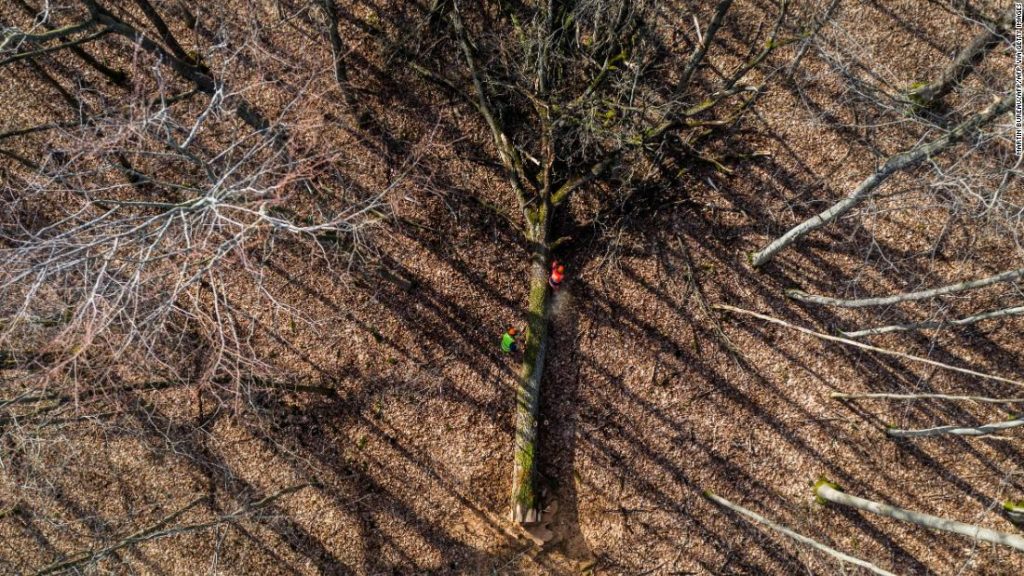Deep in the former royal forest of Bercé, in France’s Loire region, a 230-year-old tree comes crashing to the ground with thunderous intensity.
Just a sapling during the French Revolution, the 65-foot-tall oak tree is one of many being felled as part of ongoing efforts to rebuild Notre Dame.

A 200-year-old oak tree comes down as part of Notre Dame rebuild efforts. Credit: Jean-Francois Monier/AFP/Getty Images
The tree eventually will join 1,000 other oaks being used to reconstruct the wooden lattice of the roof and replace the base of the fallen spire engulfed by the blaze that devastated the Gothic building almost two years ago, in April 2019.
“We know it’s the end of something, but it’s also the beginning,” said Pauline Delord, a 15th-generation forest guardian responsible for protecting and managing the forest.
Her colleague Claire Quinones agrees. “It’s the best second life we can give (the tree),” she said.

Lumberjacks work on the felling of oak trees selected for use in the reconstruction of Notre Dame. Credit: MARTIN BUREAU/AFP/AFP via Getty Images
This winter, drones were used to scan a snow-dusted forest near Le Mans in search of the first eight trunks that would be used to support the spire. The drones, with the help of 3D imagery, were used to seek out specimens measuring 3 feet wide and over 60 feet tall, with no visible defects. The slender trees in Bercé have a slight curve that makes them ideal for the spire.
The selected trees will be felled before the end of March and dried for 12 to 18 months to make sure the beams won’t shrink or move once in place.

Notre Dame in December 2020. Credit: Mario Fourmy/Abaca/Sipa
According to the army general in charge of the reconstruction of Notre Dame, these trees were planted under King Louis XIV’s reign in order to provide wood to build the masts for ships belonging to the French navy.
“We are poor people who only live 60, 70, 80, 100 years maximum. But the trees are here after,” General Jean-Louis Georgelin said. “We recognize the humility of the human being in front of the immensity of the universe.”
In addition to the eight oaks coming down in Bercé, more trees have been donated from over 200 forests across the country — the four corners of France will be represented within the cathedral once building work is complete.
A petition addressed to France’s ecology minister has called for a stop to the tree cutting, but forestry groups say the number of trees being felled represents a tiny percentage of the oaks harvested each year in France.
Notre Dame is scheduled to reopen in 2024, but with delays that occurred last year due to the Covid-19 pandemic — and with large amounts of lead dust at the site posing a contamination risk — many believe the date set by Macron is unrealistic. General Georgelin, however, remains adamant. “We will reopen the cathedral in 2024, no doubt about that,” he said.
You may also like
-
Afghanistan: Civilian casualties hit record high amid US withdrawal, UN says
-
How Taiwan is trying to defend against a cyber ‘World War III’
-
Pandemic travel news this week: Quarantine escapes and airplane disguises
-
Why would anyone trust Brexit Britain again?
-
Black fungus: A second crisis is killing survivors of India’s worst Covid wave

